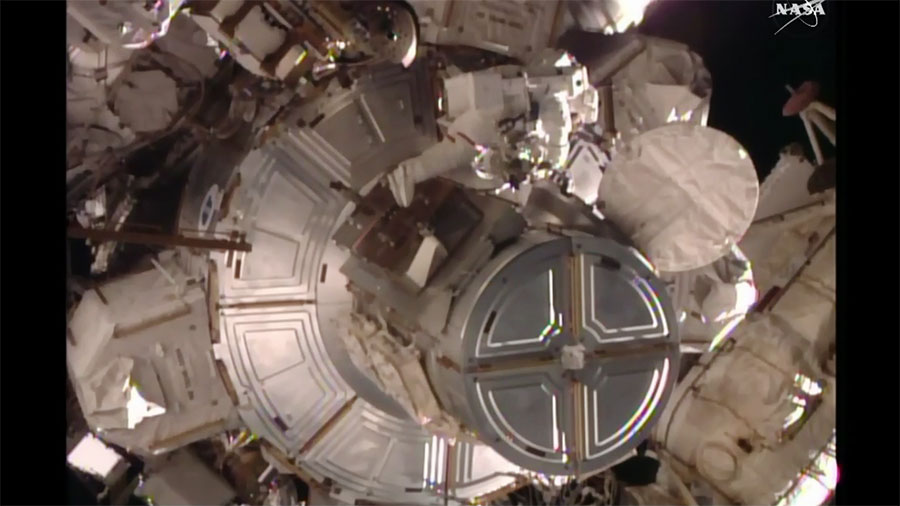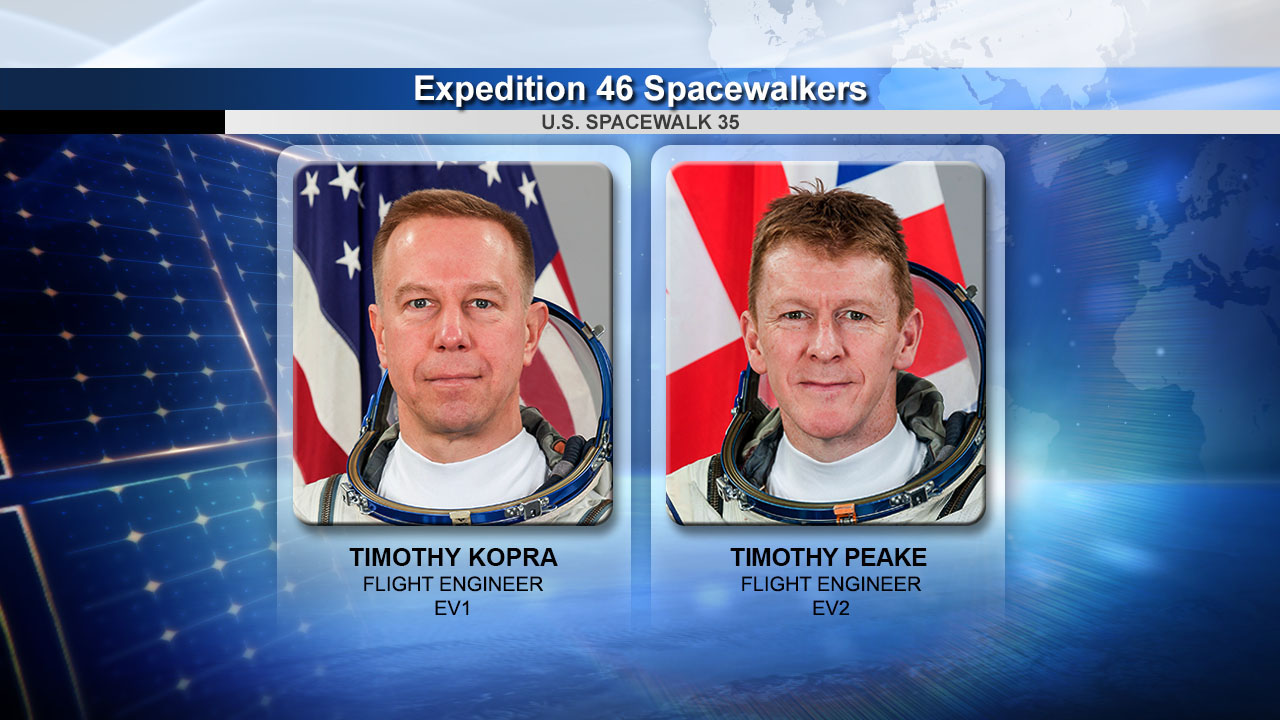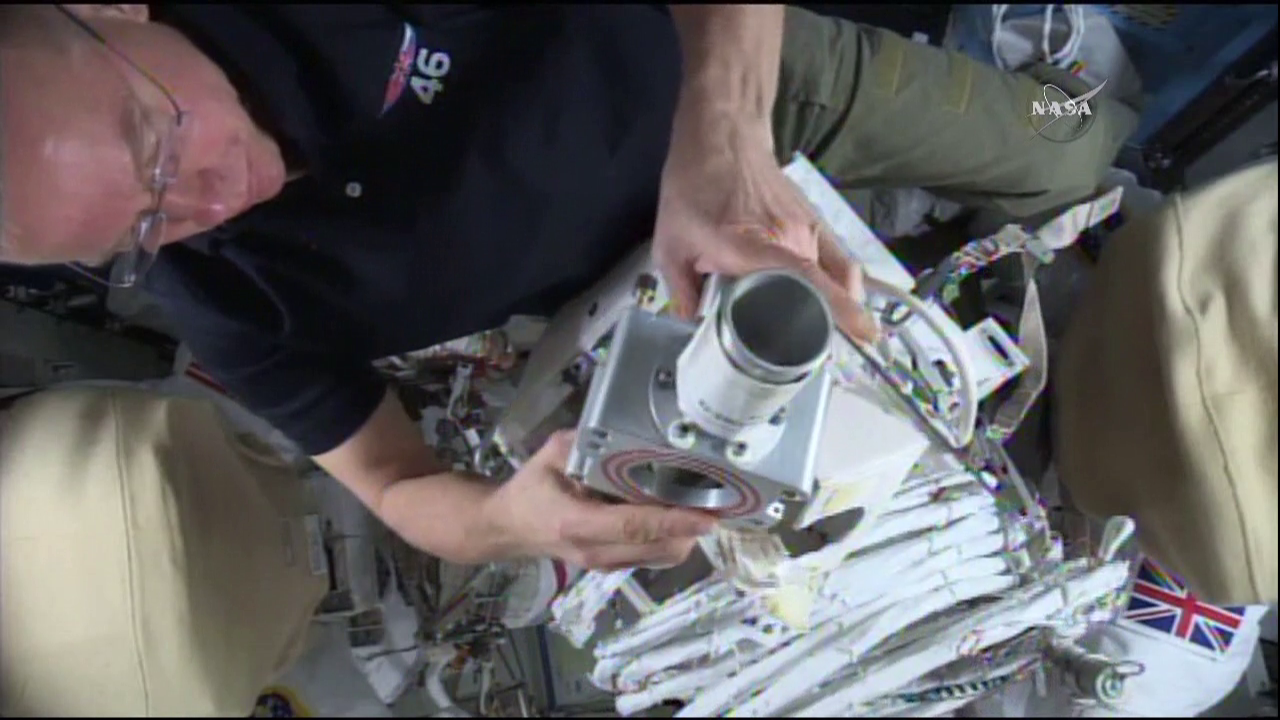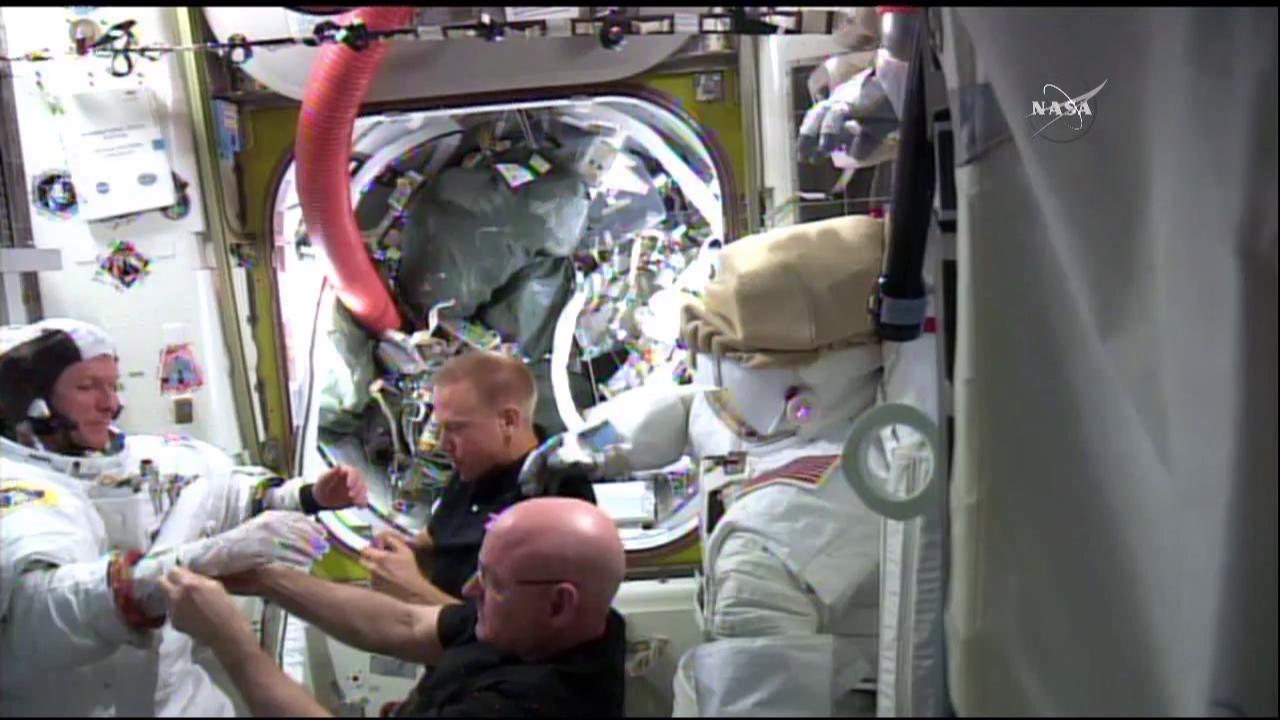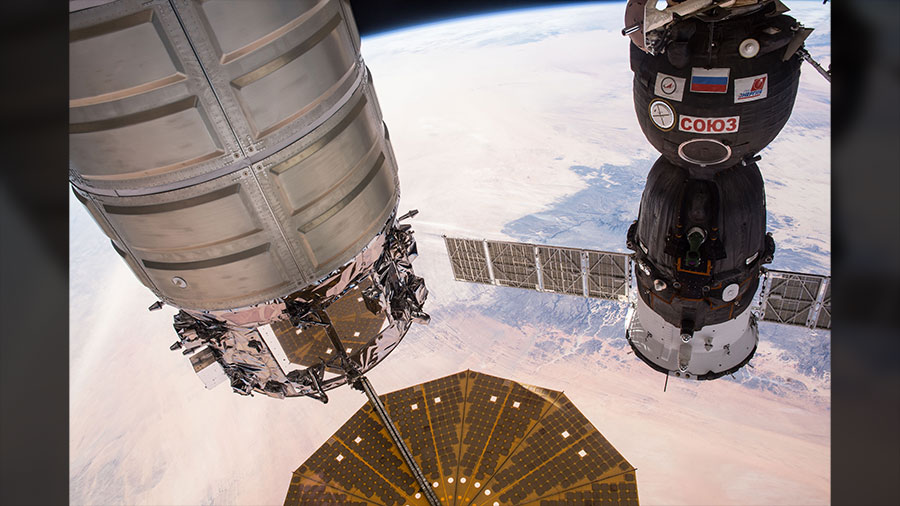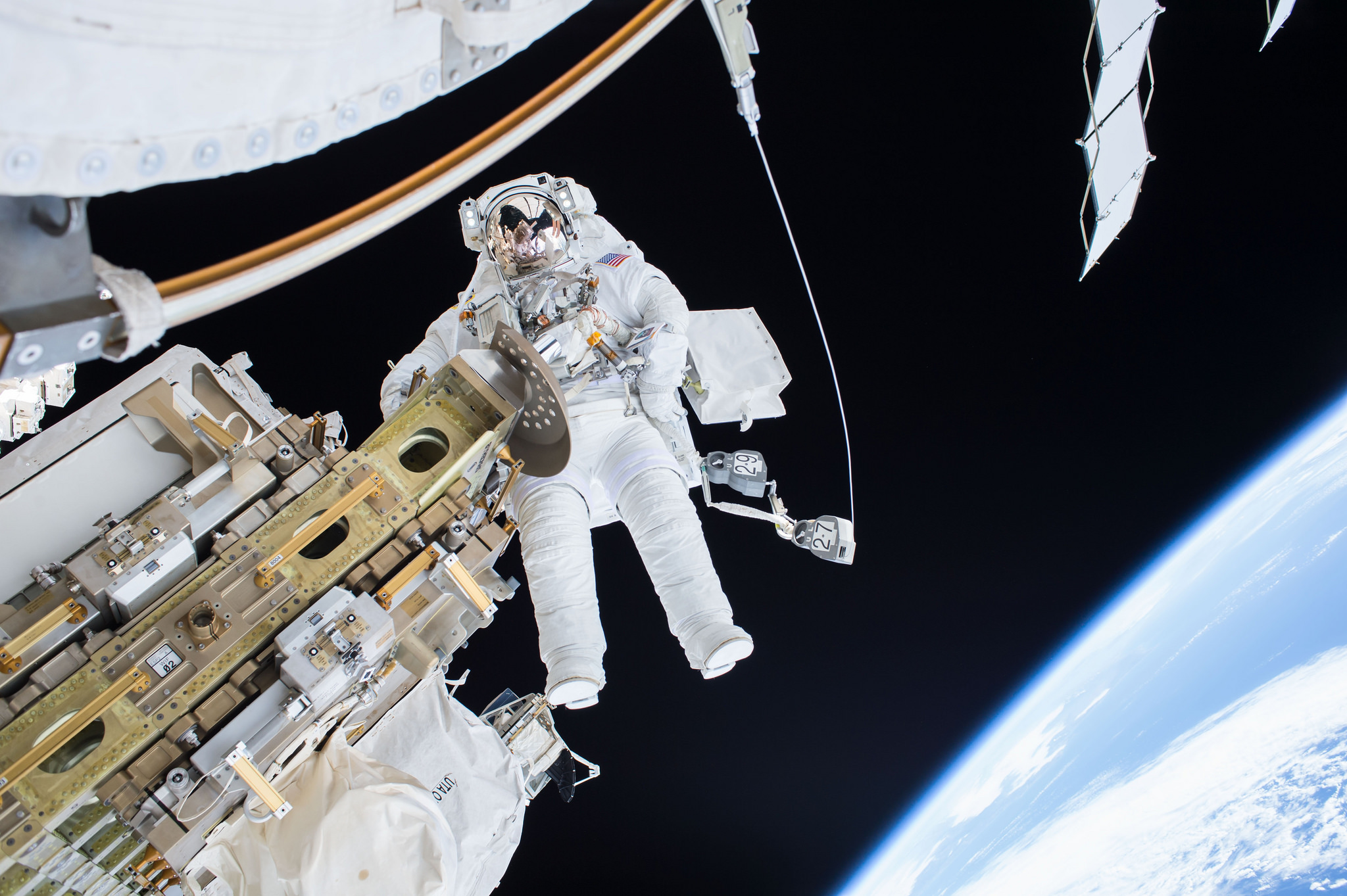NASA astronaut Tim Kopra and ESA (European Space Agency) astronaut Tim Peake completed the primary task for their spacewalk on January 15, 2016 before it was ended early by Mission Control Houston. The astronauts replaced a failed voltage regulator that caused a loss of power to one of the station’s eight power channels last November, accomplishing the major objective for this spacewalk.
The pair ended its spacewalk at 12:31 p.m. EST with the repressurization of the U.S. Quest airlock following an early termination after Kopra reported a small water bubble had formed inside his helmet.
“These procedures did their job, the team did their job and we flowed right into a nice, safe return into the airlock for these guys,” remarked NASA’s Chief Astronaut Chris Cassidy, who took part in the July 2013 spacewalk when ESA astronaut Luca Parmitano experienced a similar, but more serious, incident.
Listen to the full audio from the interview with NASA Chief Astronaut Chris Cassidy
Commander Scott Kelly assisted the crew members with an expedited removal of their spacesuits and helmets. Once they removed the spacesuits and helmets, the astronauts used a syringe to take a water sample and retrieve the helmet absorption pad to determine how much water was introduced. Engineers are already looking at data to find what may have prompted the water to form inside Kopra’s helmet.
The crew was never in any danger and returned to the airlock in an orderly fashion.
The 4 hour and 43 minutes spacewalk was the third for Kopra and the first for Peake, who both arrived to the station Dec. 15. It was the 192 in support of assembly and maintenance of the orbiting laboratory.
Teams will continue to look over data collected during the spacewalk and discuss forward plans in the days to come.


